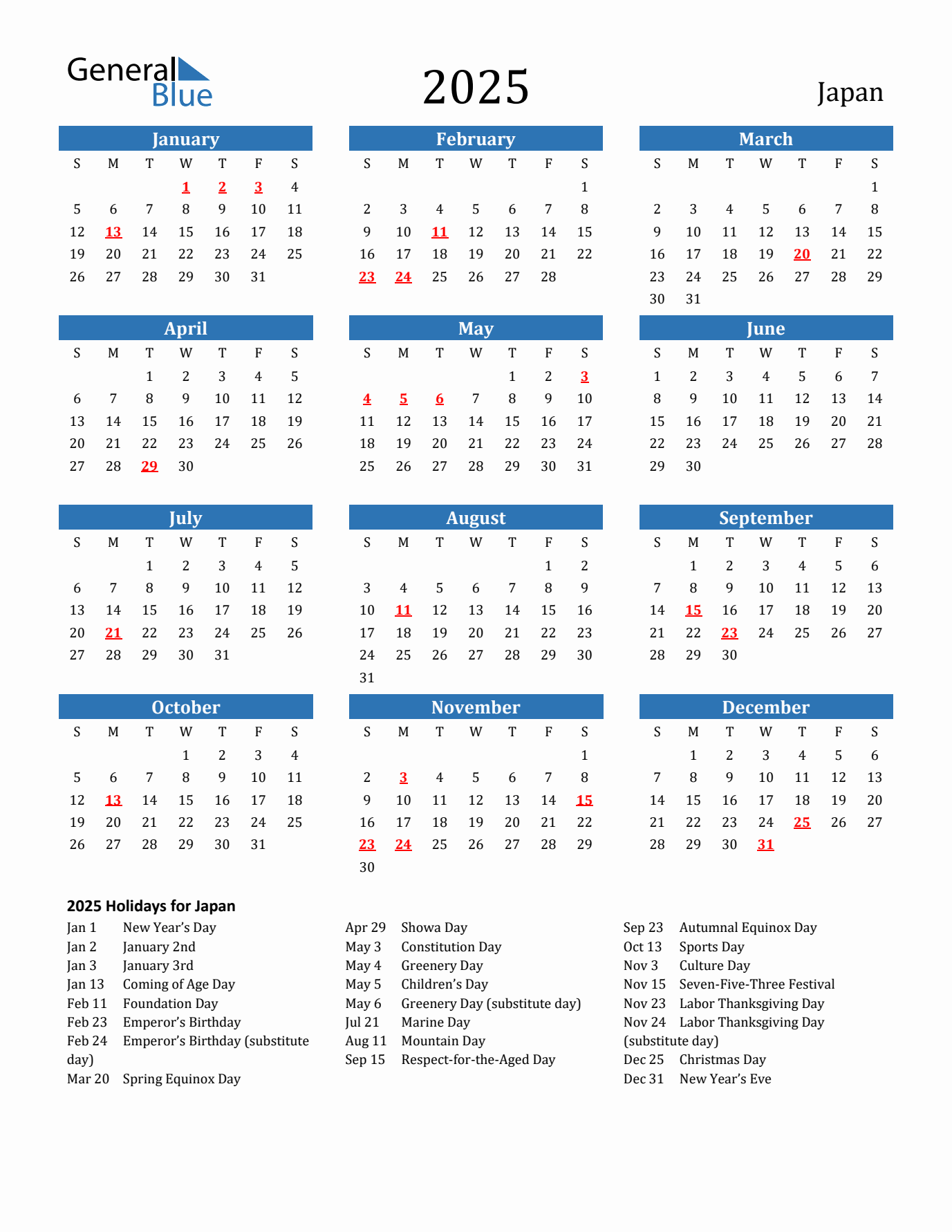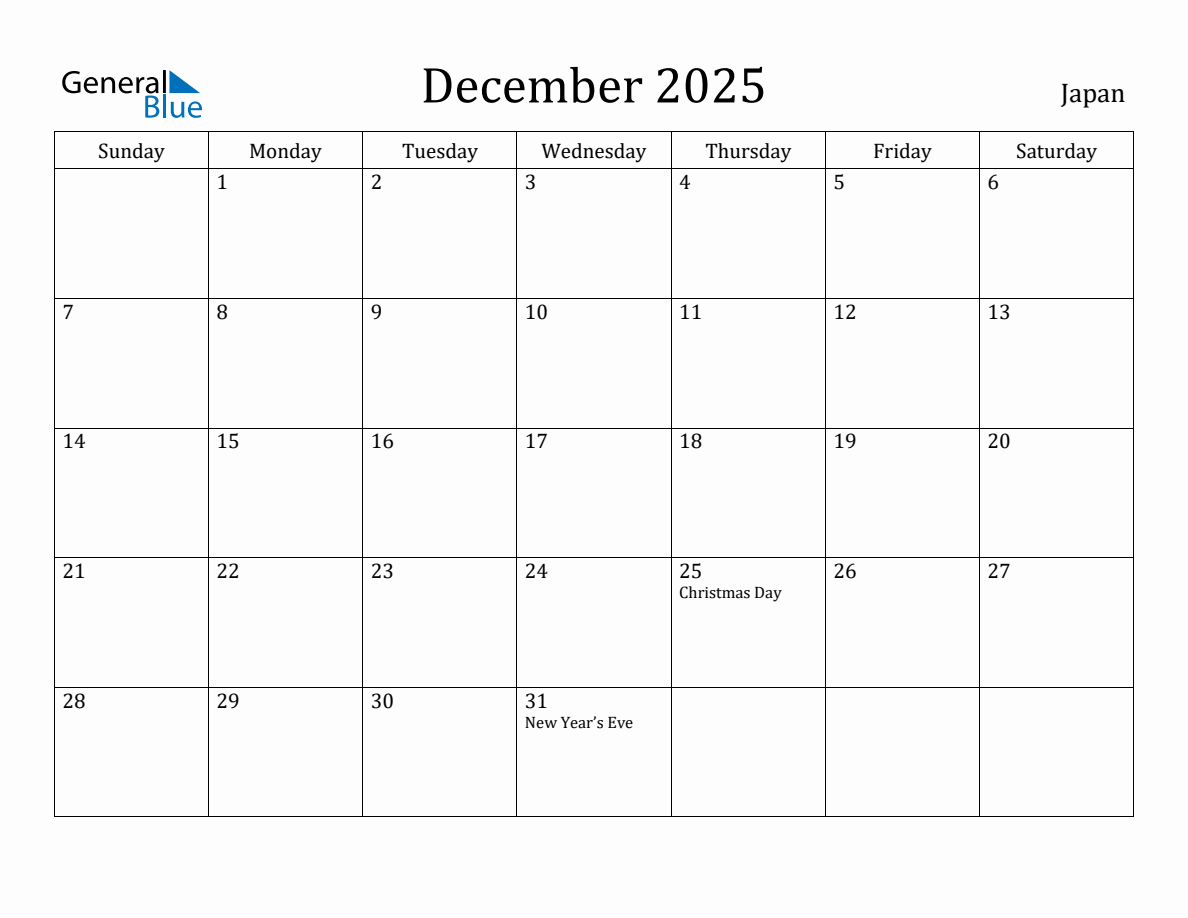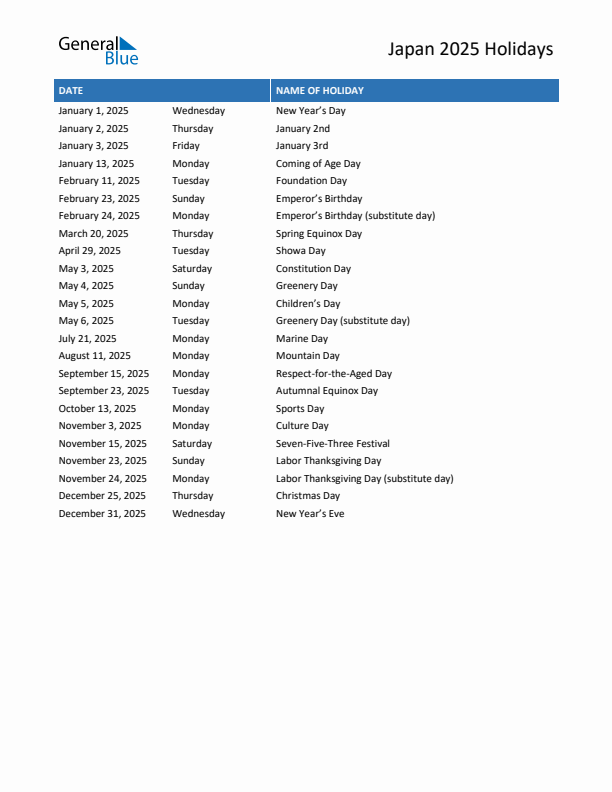Autumnal Equinox Day in Japan
When is Autumnal Equinox Day in Japan?
Autumnal Equinox Day in Japan is on September 23, 2026. It falls on Wednesday.
How many days until Autumnal Equinox Day in Japan?
There are 266 Days left until Autumnal Equinox Day in Japan.
Is Autumnal Equinox Day a public holiday in Japan?
Autumnal Equinox Day or locally known as ‘Shubun no Hi’ by the Japanese, is a national holiday observed either on the 22nd or the 23rd of September every year. Autumnal Equinox is the second equinox celebrated in the country. Equinox is the time when the sun crosses the celestial equator, as a result, the duration of the day and night-time tend to be of equal length at these times.
The said event happens twice a year, first is on March, and second is in September. Japan, being part of the Northern Hemisphere, calls the equinox that happens in March, Vernal Equinox (this is when the sun moves north across the celestial equator). Vernal Equinox is also a holiday observed in the country marking the end date of winter and the beginning of spring. On the other hand, the second equinox happening in September is called Autumnal Equinox (this is when the sun crosses the celestial equator going south), this marks the end date of summer season and the beginning of fall/autumn season in Japan.
Origin of Autumnal Equinox Day in Japan
The date of celebration for the Autumnal Equinox Day in Japan falls between the dates of September 21 – September 24, however, most of the time, it is usually observed either on the 22nd or the 23rd dates of the said month. With its observance, government offices, schools, and majority of the businesses would close down, and people are expected to spend time together for the holiday.
From Shuki Koreisai to Autumnal Equinox Day
For how many years in the past, a holiday known as ‘Shuki Koreisai’ is the one celebrated in Japan on the date of the autumnal equinox (Shunki Koreisai as its counterpart, is also celebrated on the date of the Vernal Equinox). In 1947 and the years before that, Shuki Koreisai is the holiday previously celebrated by the Japanese wherein honoring the country’s former emperors is the focus of the event. It’s also the time to thank the deities for the good harvest during the autumn season. The holiday’s former celebration has most of its references from Shintoism and Buddhism. So basically, it’s more of a religious activity in the past. Nonetheless, this way of celebration was changed beginning in 1948.
By 1948, following the events of WWII and the creation of Japan’s post-war constitution, Shuki Koreisai and many other Japanese holidays have been repackaged. The holiday Shuki Koreisai was substituted with the new holiday called ‘Autumnal Equinox Day’. The new holiday was stripped off of its religious references after the country’s post-war constitution was enacted (since there has now been a separation of the church and state in Japan). Thus, Japan’s celebration of the Autumnal Equinox Day was first observed in the mentioned year (1948). Its observance has remained the same since then up until the present times.
Traditions in Japan during Autumnal Equinox Day
The popularity of Japan across the globe stems not just from its beautiful and unique culture, but also from the spectacular sceneries found only in this country.
Autumn Leaf Viewing
Many people from across the country would also observe the so-called autumn leaf viewing during the holiday. Autumn leaf viewing or autumn leaf hunting is called momijigari in Japan. ‘Momijigari’ is one of the Japanese customs observed during the autumn season. This is an activity wherein the Japanese people go for a walk to see and admire the magnificent autumn leaves. Japan’s celebration of the Autumnal Equinox Day actually marks the beginning of the autumn leaf viewing in the country.
Offering Prayers to Deceased Family Members and Ancestors
With the celebration of the Autumnal Equinox Day, several activities are carried out by the Japanese. Like the Vernal Equinox Day, visiting the graves of the people’s deceased family members, relatives, and ancestors is customary on this day. According to the Japanese beliefs (which originates from Buddhism), the barrier between the world of the living and the world of the dead is thinnest during the autumnal equinox day, thus, this is the reason why many Japanese all over Japan make sure to arrange for a visitation in their deceased families’ tombs. The people pay their respects, prayers are offered, and burning of incense sticks are done on this day. Sweeping and cleaning of the gravestones and its surrounding areas are also performed. In addition, majority of the people would also bring fresh flowers to be placed on their loved ones’ graves. While many do this, there are also others who prefer to bring flowers that could be planted near the tombstones instead. Bringing of foods and sake as offerings are also typical on this day. Ohagi (which is made of glutinous rice covered in adzuki-bean paste or soybean flour) is an example of this. Ohagi (similar to the food brought as an offering for the dead during Vernal Equinox called ‘botamochi’) is a Japanese food which is actually not just prepared to serve as an offering for the dead, but, it is also a traditional snack eaten during the celebration of this holiday, alongside with some Japanese tea.
Higanbana Flower Viewing
For other Japanese, going to places wherein Higanbana blooms, is another way of celebrating the holiday. Higanbana (a red spider lily) is a type of flower growing in Japan which signals the arrival of the country’s autumn season. These flowers usually cover Japan’s forest floors and would be in full bloom during the holiday. To have a view of these flowers is a rare occasion, hence, many would spend time to visit places where these flowers would bloom just to catch a glimpse of its splendor. Some of the most famous viewing spots for these flowers include several parks within the Saitama Prefecture such as: Kinchakuda Manjushage Park (which features over five million of the Higanbana flowers), Kenei Gongendo Park (which features around 3 million Higanbana flowers), and the Omiya Park. Other places where these flowers are also seen growing and blooming in large numbers include: Terasaka Tanada, Yokoze, a small town in Saitama Prefecture (which features around 2 million Higanbana flowers in their natural habitat) and Hinata Yakushi in Kanagawa Prefecture (where the Higanbana flowers grow alongside with the edges of the rice fields).
Enjoying Autumn Season
While the spring season offers a vibrant color of nature that are both pleasing and relaxing, the nation’s autumn season provides a different kind of appeal that makes many tourists worldwide to choose this specific season to visit the country. According to many, the fall/autumn season is the best among the four seasons in Japan. With the plants’ and trees’ leaves changing colors, from its vibrant green to a bright red, orange, yellow, or brown colors, these brightened colors of leaves provide a different kind of allure that made not only the Japanese, but even tourists to look forward to this season every year. With the coming of autumn, a special day is also celebrated alongside the season. A day which marks the end date of summer and the beginning of the autumn season in Japan is the Autumnal Equinox Day. The Autumnal Equinox Day is a public holiday wherein many interesting events are observed throughout the country.
Temple Visits and Picnics
Although the holiday is no longer considered a religious activity, some other Japanese would still have their shrine/temple visits during the celebration of Autumnal Equinox Day. While some people take part on these visits, several others would prefer to take advantage of the good autumn weather by participating on some outdoor activities instead. These activities include going on picnics (with family, friends, or special someone), hiking, bike riding, and even going camping.
| Year | Date | Day | Holiday |
|---|---|---|---|
| 2026 | September 23 | Wednesday | Autumnal Equinox Day |
| 2027 | September 23 | Thursday | Autumnal Equinox Day |
| 2028 | September 22 | Friday | Autumnal Equinox Day |
| 2029 | September 23 | Sunday | Autumnal Equinox Day |
| 2030 | September 23 | Monday | Autumnal Equinox Day |
| 2031 | September 23 | Tuesday | Autumnal Equinox Day |
| Holiday | Date |
|---|---|
| New Year's Eve | December 31, 2025 |
| New Year's Day | January 01, 2026 |
| January 2nd | January 02, 2026 |
Download or print free 2025 calendar which includes the list of holidays in United States. Free holiday calendar templates in more than 130 countries are provided in PDF, Excel, and Microsoft Word format. For those who like to get a calendar that starts on Monday, we also have ISO calendar.
The December 2025 monthly calendar for the United States shows the holidays for the month, which is helpful in planning schedule and events in reference to the upcoming holidays in the US. It is available in PDF, Microsoft Word and Microsoft Excel formats. You may select your preferred orientation and preferred start of week since we have Monday start calendar or Sunday start calendar.
If you are looking for just a list of holidays in the United States for the year 2025, we have that available in PDF, Word and Excel formats. This can be helpful for those who like to keep track of the holidays, be it for travel, work or any other purposes. It is free to use, just like the rest of our templates. You can choose from Letter, Legal and A4 paper sizes.


